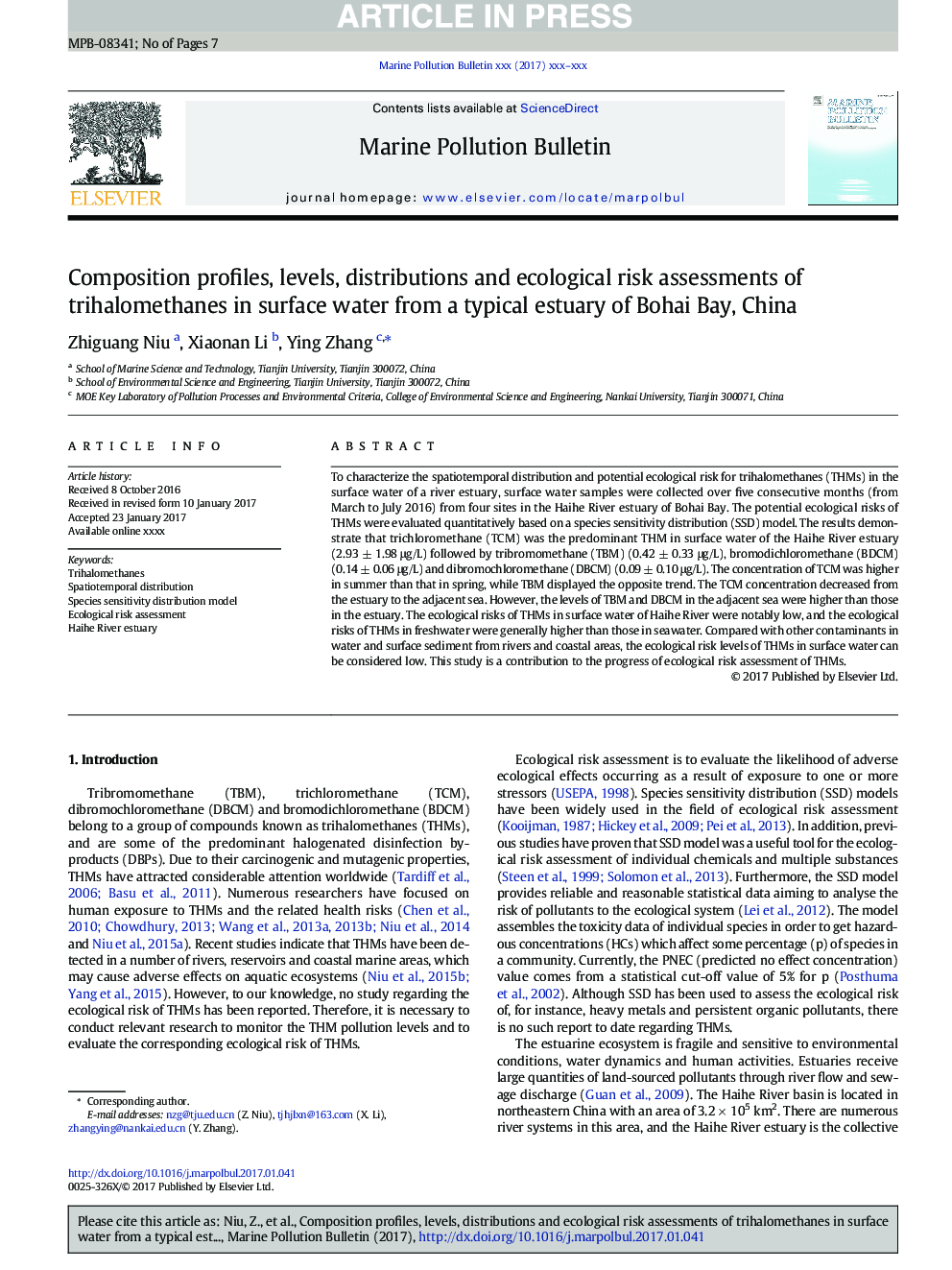| Article ID | Journal | Published Year | Pages | File Type |
|---|---|---|---|---|
| 5757520 | Marine Pollution Bulletin | 2017 | 7 Pages |
Abstract
To characterize the spatiotemporal distribution and potential ecological risk for trihalomethanes (THMs) in the surface water of a river estuary, surface water samples were collected over five consecutive months (from March to July 2016) from four sites in the Haihe River estuary of Bohai Bay. The potential ecological risks of THMs were evaluated quantitatively based on a species sensitivity distribution (SSD) model. The results demonstrate that trichloromethane (TCM) was the predominant THM in surface water of the Haihe River estuary (2.93 ± 1.98 μg/L) followed by tribromomethane (TBM) (0.42 ± 0.33 μg/L), bromodichloromethane (BDCM) (0.14 ± 0.06 μg/L) and dibromochloromethane (DBCM) (0.09 ± 0.10 μg/L). The concentration of TCM was higher in summer than that in spring, while TBM displayed the opposite trend. The TCM concentration decreased from the estuary to the adjacent sea. However, the levels of TBM and DBCM in the adjacent sea were higher than those in the estuary. The ecological risks of THMs in surface water of Haihe River were notably low, and the ecological risks of THMs in freshwater were generally higher than those in seawater. Compared with other contaminants in water and surface sediment from rivers and coastal areas, the ecological risk levels of THMs in surface water can be considered low. This study is a contribution to the progress of ecological risk assessment of THMs.
Related Topics
Physical Sciences and Engineering
Earth and Planetary Sciences
Oceanography
Authors
Zhiguang Niu, Xiaonan Li, Ying Zhang,
